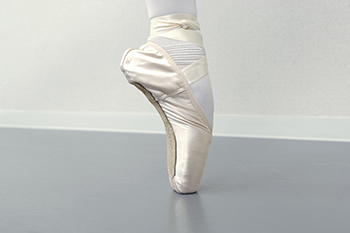September 2023
Amniotic Band Syndrome and Infant’s Feet

Amniotic band syndrome is also known as congenital constriction ring or constriction band syndrome. It is a rare condition encompassing various abnormalities. During pregnancy, damage to the lining of the amniotic sac leads to the formation of string-like structures called strands, which entangle the developing fetus and restrict blood flow, resulting in various birth abnormalities. This can often affect the arms, legs, and feet. The exact cause of this syndrome is unknown, but it typically occurs when the amniotic sac lining tears during pregnancy. It can be due to random factors or specific environmental influences, such as abdominal trauma or certain medical procedures. Symptoms can vary widely, with some babies born with minor deformities and others with severe and life-threatening defects, including limb malformations. Diagnosis is often made at birth, as amniotic bands are challenging to detect on regular ultrasounds. Treatment varies based on severity and may include supportive care, surgery, and rehabilitative therapy to help affected infants lead healthy lives. If you have a child born with amniotic band syndrome and their feet are affected, it is strongly suggested that you make an appointment with a podiatrist and begin treatment as early as possible.
Congenital foot problems require immediate attention to avoid future complications. If you have any concerns, contact Dr. Scott Shrem of Garden State Foot & Ankle Center. Our doctor can provide the care you need to keep you pain-free and on your feet.
Congenital foot problems are deformities affecting the feet, toes, and/or ankles that children are born with. Some of these conditions have a genetic cause while others just happen. Some specific foot ailments that children may be born with include clubfeet, polydactyly/macrodactyly, and cleft foot. There are several other foot anomalies that can occur congenitally. What all of these conditions have in common is that a child may experience difficulty walking or performing everyday activities, as well as trouble finding footwear that fits their foot deformity. Some of these conditions are more serious than others. Consulting with a podiatrist as early as possible will help in properly diagnosing a child’s foot condition while getting the necessary treatment underway.
What are Causes of Congenital Foot Problem?
A congenital foot problem is one that happens to a child at birth. These conditions can be caused by a genetic predisposition, developmental or positional abnormalities during gestation, or with no known cause.
What are Symptoms of Congenital Foot Problems?
Symptoms vary by the congenital condition. Symptoms may consist of the following:
- Clubfoot, where tendons are shortened, bones are shaped differently, and the Achilles tendon is tight, causing the foot to point in and down. It is also possible for the soles of the feet to face each other.
- Polydactyly, which usually consists of a nubbin or small lump of tissue without a bone, a toe that is partially formed but has no joints, or an extra toe.
- Vertical talus, where the talus bone forms in the wrong position causing other bones in the foot to line up improperly, the front of the foot to point up, and the bottom of the foot to stiffen, with no arch, and to curve out.
- Tarsal coalition, when there is an abnormal connection of two or more bones in the foot leading to severe, rigid flatfoot.
- Cleft foot, where there are missing toes, a V-shaped cleft, and other anatomical differences.
- Macrodactyly, when the toes are abnormally large due to overgrowth of the underlying bone or soft tissue.
Treatment and Prevention
While there is nothing one can do to prevent congenital foot problems, raising awareness and receiving neonatal screenings are important. Early detection by taking your child to a podiatrist leads to the best outcome possible.
If you have any questions please feel free to contact our office located in Hazlet, NJ . We offer the newest diagnostic tools and technology to treat your foot and ankle needs.
Enhancing Toe Point Through Foot Stretching

When it comes to dance, gymnastics, or even just maintaining healthy feet, having a well-pointed toe can make a significant difference. Achieving a beautifully pointed toe is not just about aesthetics, it is also about improving your overall foot flexibility and strength. Foot stretching is the key to unlocking this potential. Begin by sitting comfortably with your legs extended in front of you. Point your toes as far as possible and hold for a few seconds, feeling the stretch along the top of your feet. Next, flex your feet by pulling your toes towards you while keeping your heels on the ground. Repeat this cycle several times, gradually increasing the duration of each stretch. Another effective exercise involves using a resistance band. Sit with your legs extended, loop the band around your toes, and gently pull the band towards you. This will help improve the flexibility of your toes and the arches of your feet. It is beneficial to incorporate calf stretches into your routine, as flexible calf muscles can enhance your ability to point your toes effectively. Simple calf stretches can help maintain the alignment of your feet and ankles, supporting a graceful toe point. Consistency is important, and by regularly practicing foot stretches and exercises, you can steadily improve your toe point and enjoy the benefits of stronger and more flexible feet. If you would like more information about foot stretches that can strengthen the toes, it is suggested that you confer with a podiatrist.
Stretching the feet is a great way to prevent injuries. If you have any concerns with your feet consult with Dr. Scott Shrem from Garden State Foot & Ankle Center. Our doctor will assess your condition and provide you with quality foot and ankle treatment.
Stretching the Feet
Being the backbone of the body, the feet carry your entire weight and can easily become overexerted, causing cramps and pain. As with any body part, stretching your feet can serve many benefits. From increasing flexibility to even providing some pain relief, be sure to give your feet a stretch from time to time. This is especially important for athletes or anyone performing aerobic exercises, but anyone experiencing foot pain or is on their feet constantly should also engage in this practice.
Great ways to stretch your feet:
- Crossing one leg over the others and carefully pull your toes back. Do 10-20 repetitions and repeat the process for each foot
- Face a wall with your arms out and hands flat against the wall. Step back with one foot and keep it flat on the floor while moving the other leg forward. Lean towards the wall until you feel a stretch. Hold for 30 seconds and perform 10 repetitions for each foot
- Be sure not to overextend or push your limbs too hard or you could risk pulling or straining your muscle
Individuals who tend to their feet by regular stretching every day should be able to minimize foot pain and prevent new problems from arising.
If you have any questions, please feel free to contact our office located in Hazlet, NJ . We offer the newest diagnostic and treatment technologies for all your foot care needs.
Gout Pain Can Be Managed
Foot Pain and Mobility

Foot health plays a crucial role in maintaining an active and mobile lifestyle as you age. Your feet serve as the foundation for your lower extremities. Any significant foot disorder can impact your ability to walk, perform daily activities, and even engage in mild exercise. Having foot pain can lead to changes in your gait, which can, over time, affect your ankles, knees, hips, and even your back. While aging naturally brings changes to your feet, including alterations in shoe size and structure, discomfort and pain should not be considered normal. Properly fitting, supportive, and comfortable shoes can help prevent issues such as corns, arch pain, and bunions. Certain occupations may require safety toed shoes that may help to avoid foot injuries. Practical steps to promote foot health include daily foot inspections, regular toenail maintenance, and walking in comfortable shoes. Addressing foot problems early and adopting preventive measures can reduce chronic pain, infections, hospital visits, and help you maintain your mobility. If you are having foot problems, it is suggested that you make an appointment with a podiatrist for a proper diagnosis and a treatment plan that is right for you.
Foot Pain
Foot pain can be extremely painful and debilitating. If you have a foot pain, consult with Dr. Scott Shrem from Garden State Foot & Ankle Center. Our doctor will assess your condition and provide you with quality foot and ankle treatment.
Causes
Foot pain is a very broad condition that could be caused by one or more ailments. The most common include:
- Bunions
- Hammertoes
- Plantar Fasciitis
- Bone Spurs
- Corns
- Tarsal Tunnel Syndrome
- Ingrown Toenails
- Arthritis (such as Gout, Rheumatoid, and Osteoarthritis)
- Flat Feet
- Injury (from stress fractures, broken toe, foot, ankle, Achilles tendon ruptures, and sprains)
- And more
Diagnosis
To figure out the cause of foot pain, podiatrists utilize several different methods. This can range from simple visual inspections and sensation tests to X-rays and MRI scans. Prior medical history, family medical history, and any recent physical traumatic events will all be taken into consideration for a proper diagnosis.
Treatment
Treatment depends upon the cause of the foot pain. Whether it is resting, staying off the foot, or having surgery; podiatrists have a number of treatment options available for foot pain.
If you have any questions, please feel free to contact our office located in Hazlet, NJ . We offer the newest diagnostic and treatment technologies for all your foot care needs.
In-Office Surgery Options for Patients

When it comes to foot surgery, an office-based surgical suite offers benefits for both patients and podiatrists. For patients, the convenience and comfort factor can play a significant role. Familiarity with the office environment, the staff, and the overall setting may help alleviate nervousness and promote a more relaxed experience. The cost of surgical procedures can be significantly reduced, and the avoidance of a hospital stay minimizes the risk of infection. Office-based surgical suites can benefit podiatrists, as well, by allowing them to save time so they can see more patients. Creating an office-based surgical suite starts with finding a suitable room, acquiring the necessary equipment, and training staff in surgical procedures, such as gowning, gloving, and instrument setup. While the process demands attention to detail, it's well within reach for doctors interested in creating a more patient-centered, cost-effective, and future-oriented approach to podiatric surgery. The transition to office-based surgery can help podiatrists ensure that patients receive top-notch care without the anxiety of high costs and hospital-related risks.
If you are experiencing pain in the feet or ankles, don’t join the stubborn majority refusing treatment. Feel free to contact Dr. Scott Shrem from Garden State Foot & Ankle Center. Our doctor can provide the care you need to keep you pain-free and on your feet.
What Is a Podiatrist?
Someone would seek the care of a podiatrist if they have suffered a foot injury or have common foot ailments such as heal spurs, bunions, arch problems, deformities, ingrown toenails, corns, foot and ankle problems, etc.
Podiatric Treatment
A podiatrist will treat the problematic areas of the feet, ankle or lower leg by prescribing the following:
- Physical therapy
- Drugs
- Orthotic inserts or soles
- Surgery on lower extremity fractures
A common podiatric procedure a podiatrist will use is a scanner or force plate which will allow the podiatrist to know the designs of orthotics. Patients are then told to follow a series of tasks to complete the treatment. The computer will scan the foot a see which areas show weight distribution and pressure points. The podiatrist will read the analysis and then determine which treatment plans are available.
If you have any questions please feel free to contact our office located in Hazlet, NJ . We offer the newest diagnostic and treatment technologies for all your foot and ankle needs.
Blog Archives
- April 2025
- March 2025
- February 2025
- January 2025
- December 2024
- November 2024
- October 2024
- September 2024
- August 2024
- July 2024
- June 2024
- May 2024
- April 2024
- March 2024
- February 2024
- January 2024
- December 2023
- November 2023
- October 2023
- September 2023
- August 2023
- July 2023
- June 2023
- May 2023
- April 2023
- March 2023
- February 2023
- January 2023
- December 2022
- November 2022
- October 2022
- September 2022
- August 2022
- July 2022
- June 2022
- May 2022
- April 2022
- March 2022
- February 2022
- January 2022
- December 2021
- November 2021
- October 2021
- September 2021
- August 2021
- July 2021
- June 2021
- May 2021
- April 2021
- March 2021
- February 2021
- January 2021
- December 2020
- November 2020
- October 2020
- September 2020
- August 2020
- July 2020
- June 2020
- May 2020
- April 2020
- March 2020
- February 2020
- January 2020
- December 2019
- November 2019
- October 2019
- September 2019
- August 2019
- July 2019
- June 2019
- May 2019
- April 2019
- March 2019
- February 2019
- January 2019
- December 2018
- November 2018
- October 2018
- September 2018
- August 2018
- July 2018
- June 2018
- May 2018
- April 2018
- March 2018









